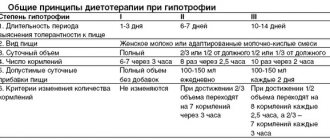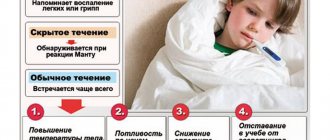Leukemia in children is a systemic blood disease, which is characterized by the replacement of normal bone marrow hematopoiesis by the proliferation of less functionally active and differentiated cells - early precursors of leukocyte lineage cells.
Leukemia in children in the absence of specific treatment leads to death in 100% of cases. Modern polychemotherapy allows achieving stable remission of the disease in 50–90% of children.
In the overall structure of cancer incidence in children and adolescents, leukemia accounts for 30 to 50%. The disease occurs with a frequency of 4-5 cases per 100,000 children. Leukemia most often affects children aged 2–5 years.
In recent years, there has been a persistent trend towards an increase in the incidence of leukemia in children.
Causes of leukemia in children and risk factors
The exact mechanism of development of leukemia in children remains unclear. The following factors have been proven to play a role in increasing the risk of developing the disease:
- immune and hormonal disorders in the child’s body;
- hereditary predisposition;
- infection with oncogenic strains of viruses, for example, Epstein-Barr virus;
- ionizing radiation;
- intoxication with chemicals, salts of heavy metals;
- contact with industrial toxins.
Children who have undergone radiation or chemotherapy for any other cancer may subsequently develop secondary leukemia.
Most experts consider the causes of leukemia in children from the point of view of the clonal concept and mutation theory. Under the influence of risk factors, a mutation in the DNA of a hematopoietic cell may occur in a child. As a result, its genetic code is disrupted, which causes uncontrolled growth and impaired differentiation. In fact, leukemia cells are clones of mutated hematopoietic cells, which are not only incapable of differentiation and further maturation, but also suppress the growth of normal hematopoiesis.
When acute leukemia relapses in children, the issue of the need for bone marrow transplantation is decided.
Blast (leukemic) cells enter the systemic bloodstream and spread throughout the body, leading to leukemic infiltration of internal organs and tissues. They can also overcome the blood-brain barrier, contributing to the development of neuroleukemia, a pathological condition associated with leukemic infiltration of the substance and membranes of the brain.
An increased risk of developing leukemia is observed in children suffering from the following diseases:
- Down's disease;
- Fanconi anemia;
- Bloom's syndrome;
- Wiskott–Aldrich syndrome;
- Klinefelter's syndrome;
- Li–Fraumeni syndrome;
- primary immunodeficiencies (Louis-Barr ataxia-telangiectasia, X-linked agammaglobulinemia);
- polycythemia.
Causes of leukemia
Let's look at the main causes of leukemia in children. Since the disease most often develops at an early age, it is not always possible to identify the exact relationship with external factors. In most cases, the pathology is caused by factors associated with the course of pregnancy.
The photo shows what a blood cell disease looks like - leukemia, leukemia, which is where the name of the disease comes from.
When studying the anamnesis (medical history), it often turns out that the mother could have been exposed to sunlight for a long time and been exposed to intoxication (poisoning) with various products. The most dangerous intoxication associated with production is when the mother had contact with arsenic, lead, phosphorus or gasoline before going on maternity leave. The risk group includes children whose mothers smoked a lot during pregnancy, took medications, drugs, and alcohol.
Note! Every year, from 4 to 5 cases of blood cancer in children are registered per 100 thousand of the child population, which indicates that this disease occupies a leading position among oncological pathologies.
Signs of acute leukemia in children are observed with congenital anomalies associated with genetic abnormalities:
- Down syndrome increases the risk of developing leukemia up to 15 times;
- Klinefelter syndrome, in which a boy has an extra X chromosome;
- Fransconi type anemia;
- neurofibromatosis and other rare diseases.
Blood leukemia develops in children whose mother or themselves were exposed to radiation during pregnancy, which led to cell mutation. In general, poor ecology is the cause of various cancers.
Note! It is in the regions where accidents occurred at nuclear power plants, such as Fukushima and the Chernobyl nuclear power plant, that the highest incidence of leukemia is recorded, not only in children, but also in the adult part of the population.
Thus, acute lymphoblastic leukemia in children, under the influence of radiation and poor ecology, occurs up to 5 times more often, and myeloid leukemia - generally up to 20 times more often. A child who receives immunosuppressive drugs after an organ transplant operation or when treating oncological pathologies with cytostatics is at risk of leukemia. In a number of children born with leukemia, the cause of the disease cannot be determined.
Forms of the disease
Depending on the duration of the disease, leukemia in children is divided into acute (less than two years) and chronic (more than two years) forms. The vast majority of children have acute leukemia. The chronic form of the disease is diagnosed in no more than 3% of all cases. Congenital leukemia in children is considered as a special form.
sosudinfo.com
Acute leukemias, depending on the morphological characteristics of tumor cells, are divided into two types.
- Lymphoblastic . Its development is caused by the uncontrolled division of lymphoblasts - immature lymphocytes. In turn, it is divided into three types: with small lymphoblasts (L1), with large polymorphic lymphoblasts (L2) and with polymorphic large lymphoblasts with vacuolation of the cytoplasm (L3). Acute lymphoblastic leukemia in children according to antigenic markers is divided into B-cell (1-3%), T-cell (15-25%) and O-cell (70-80%). In pediatric practice, lymphoblastic leukemia L is most often observed;
- Non-lymphoblastic. This form of leukemia in children, depending on the predominance of a certain type of blast cells, is divided into poorly differentiated myeloblastic (M1), highly differentiated myeloblastic (M2), promyelocytic (M3), myelomonoblastic (M4), monoblastic (M5), erythromyelous (M6), megakaryocytic (M7). ), eosinophilic (M8), undifferentiated (M0) forms.
To confirm the diagnosis, a laboratory study of peripheral blood and red bone marrow aspirate is performed.
What is leukemia
Oncological disease in children - leukemia, or otherwise blood cancer, occurs when the blood circulation process in the brain structure is disrupted. The body no longer controls the accumulation of white, immature blood cells in the bone marrow. In other words, unnecessary cells are produced, which are subsequently used to replace healthy ones.
With this pathology, the level of hemoglobin in blood cells, which is involved in the transport of oxygen to organs and tissues, and ensures their uninterrupted functioning, is significantly reduced.
Leukemia is often called leukemia, which can occur in two forms. In children, acute leukemia is diagnosed in 80% of cases. In advanced cases, the life prognosis rarely exceeds 1-2 years, so timely diagnosis of the pathology is a prerequisite for increasing the chances of recovery and long-term remission.
Stages of the disease
There are three stages of leukemia in children.
- Spicy. It begins from the moment the first clinical signs of leukemia appear in children and continues until clinical and hematological parameters improve during therapy.
- Incomplete or complete remission. When complete remission is achieved, less than 5% of blast cells are detected in red bone marrow puncture. Incomplete remission is characterized by normalization of clinical parameters and hemogram, content in the bone marrow from 5 to 20% of blast cells.
- Relapse. Against the background of a favorable blood picture, leukemic infiltration of the tissue of the lungs, testicles, nervous system and other organs occurs.
Symptoms of the disease in leukemia in children
Depending on the intensity of the disease and its form, various signs of leukemia in children can be diagnosed, occurring clearly or, conversely, more covertly:
- loss of appetite, up to complete refusal to eat;
- sore throat, accompanied by colds and catarrhal symptoms;
- rapid weight loss;
- lethargy and weakness of the whole body. Even after a night's rest, the baby feels increased sleepiness;
- frequent bleeding from the nose and gums;
- the appearance of hematomas on the body, even at the slightest touch;
- the skin becomes pale;
- the child becomes more capricious. Often there are bouts of crying without any reason;
- a significant increase in the size of the lymph nodes and spleen is diagnosed;
- shortness of breath appears with prolonged movement;
- attacks of tachycardia;
- in complicated cases, necrosis of the skin and the appearance of sepsis of varying severity can be diagnosed.
With leukemia, the disease can be determined not only by external signs, but also by test results. As a rule, the pathological process can be diagnosed by performing a general blood screening:
- low platelet content, which is why the baby may experience frequent bleeding from abrasions, scratches, or simply after blood sampling;
- the level of hemoglobin in the blood is reduced and the child is diagnosed with anemia of various stages;
- the composition of the blood can determine a general decrease in the functionality of the immune system;
- the presence of pathogenic cells in the blood.
With leukemia in children, symptoms can manifest not only clearly, but also hidden. As a rule, the stage of development of leukemia can be identified by the severity of the pathogenic signs of the disease.
Symptoms of leukemia in children
The clinical picture of leukemia in children usually develops gradually, with a predominance of nonspecific symptoms:
- increased fatigue;
- sleep disorders;
- pain in bones and joints;
- decreased appetite;
- increase in body temperature.
In rare cases, leukemia in children manifests acutely with severe hemorrhagic or intoxication syndrome.
Over time, children develop pronounced pallor of the mucous membranes and skin. Subsequently, the skin acquires an earthy or jaundiced tint. Leukemic infiltration of the mucous membranes contributes to frequent tonsillitis, stomatitis, and gingivitis. Infiltration of blast cells in the spleen and liver is clinically manifested by the development of hepatosplenomegaly, the salivary glands - sialadenopathy, and the lymph nodes - lymphadenopathy.
Children who have undergone radiation or chemotherapy for any other cancer may subsequently develop secondary leukemia.
Inhibition of normal bone marrow hematopoiesis leads to the appearance of a number of syndromes:
- anemic (myelophthisis anemia) – its development is associated with impaired maturation of red blood cells, as well as frequent bleeding;
- hemorrhagic – caused by a reduced content of platelets in the blood, manifested by skin hemorrhages (petechiae, ecchymosis), nasal, uterine, pulmonary, gastrointestinal bleeding;
- infectious – due to a disruption in the formation of mature leukocytes, the body becomes defenseless against infections. Frequent infectious and inflammatory diseases take a severe course, often develop into sepsis and cause the death of the patient;
- intoxication - manifested by weight loss, hyperhidrosis, fever, severe general weakness, nausea and vomiting, anorexia, malnutrition.
Leukemia in children is usually accompanied by the development of cardiovascular disorders, the signs of which are:
- decreased cardiac output (according to echocardiography);
- diffuse changes in the myocardium (according to ECG data);
- expansion of the borders of the heart (according to X-ray examination of the chest organs);
- arrhythmias;
- tachycardia.
Clinical course of the disease
The disease begins gradually; it is not always possible to identify signs of leukemia in children at an early stage, since the symptoms resemble the common flu or colds. Along with symptoms of malaise, the child develops spotty rashes on the body. Children suffer from signs of weakness such as vomiting, frequent headaches, dizziness and loss of appetite.
The main symptoms of leukemia: psychological, inflammation of the lymph nodes, enlargement of the spleen and liver, skin disorders, systemic weight loss, fever, infections. Mild difficulty breathing, muscle weakness, pain in bones and joints, increased sensitivity.
Important! Loss of appetite at the initial stage of the disease leads to a sharp decrease in body weight, which should puzzle parents.
Features of the initial stage of leukemia in children manifest themselves in the form of a decrease in the child’s activity in combination with the predominance of muscle pain in the lower and upper extremities. Regardless of whether it is acute myeloblastic leukemia or lymphoblastic leukemia, the disease is characterized by decreased immunity, which exposes children to bacterial and viral infections.
In the advanced stage, the symptoms of blood leukemia - leukemia - begin to manifest themselves clearly. Skin rashes predominate, a strong decrease in the activity of children, pain in different parts of the body.
Leukemia manifests itself with specific symptoms:
- the skin becomes pale and dry;
- I experience bleeding from the nose and gums;
- tachycardia and arrhythmia are noted on the part of the heart;
- due to intoxication, sweating, fever, and anorexia appear;
- When the brain is damaged, severe pain in the head, stiffness (tension) of the neck muscles, and mental disorders occur.
Manifestation of leukemia on the skin.
In the last, third stage of pathology, cancer metastasizes throughout the body, which can affect any organs. Hair loss is noted. The child requires constant care from the attending physician in a hospital setting. Having considered what leukemia in children is and its symptoms, you can learn about methods of diagnosis and treatment.
Diagnostics
If leukemia is suspected, children are referred to a pediatric oncohematologist. To confirm the diagnosis, a laboratory study of peripheral blood and red bone marrow aspirate is performed.
In acute leukemia in children, the following changes are revealed in a general blood test:
- anemia;
- reticulocytopenia;
- thrombocytopenia;
- leukocytosis (much less often leukopenia);
- increase in ESR;
- basophilopenia;
- eosinophilopenia;
- blastemia.
One of the main laboratory signs of leukemia in children (acute form) is the absence of intermediate forms of leukocytes (young, band) between blast and mature cells.
In rare cases, leukemia in children manifests acutely with severe hemorrhagic or intoxication syndrome.
If leukemia is suspected, children must undergo a sternal puncture followed by a laboratory examination of the resulting puncture (myelogram). The diagnosis is considered confirmed when a blast cell content of more than 30% is detected.
Until a definitive diagnosis is made, children should not be given glucocorticoids, which promote the destruction of blast cells, which can complicate the diagnostic process.
If laboratory data do not allow a clear and unambiguous diagnosis, puncture of the ilium (trepanobiopsy) is indicated.
In order to determine various forms of leukemia in children, various types of cytogenetic, immunological and cytochemical studies are performed.
Biochemical blood testing for leukemia in children is of auxiliary value. It reveals:
- hypofibrinogenemia – occurs as a result of concomitant DIC syndrome;
- hyperuricemia – caused by a shortened cell life cycle.
To identify possible metastases in different anatomical areas, instrumental diagnostics are performed:
- chest x-ray;
- Ultrasound of the scrotum (in boys);
- Ultrasound of the abdominal organs;
- Ultrasound of the salivary glands;
- Ultrasound of lymph nodes;
- computer and magnetic resonance imaging of the head, chest and abdominal cavity, pelvis.
If the development of neuroleukemia is suspected, the child should be referred for consultation to a pediatric neurologist. To confirm the diagnosis, it is necessary to perform ophthalmoscopy, radiography of the skull, and examination of cerebrospinal fluid obtained during lumbar puncture.
Children in second remission are prime candidates for bone marrow transplantation.
Leukemia in children requires differential diagnosis with a leukemia-like reaction of the body of a transient nature, which can occur against the background of sepsis, cytomegalovirus infection, infectious mononucleosis, whooping cough and tuberculosis.
Therapeutic measures
When initial signs of leukemia are detected in children, a diagnostic examination and symptomatic treatment are first prescribed. After an accurate diagnosis is made, treatment is carried out in a specialized children's hospital.
For treatment, the following are used: chemotherapy, radiotherapeutic methods, bone marrow transplantation, and very rarely, medicine is injected into the canal with the cerebrospinal fluid. Drug treatment is prescribed according to the degree and type of damage to the circulatory system, and hormonal therapy is also used to stimulate the immune system.
Leukemia in children, if detected early, can be cured in 85% of cases. Every year, new technologies and treatment methods make it possible to heal more patients and prevent the relapse of the disease.
Treatment of leukemia in children
The goal of treating leukemia in children is to achieve complete remission. The child is hospitalized in an oncology clinic and placed in a sterile box to prevent infectious complications.
Source: malysh-ma.ru
To destroy the leukemic clone, polychemotherapy is carried out. The choice of treatment regimen is carried out taking into account the form and stage of the disease, the general condition of the child, the presence or absence of concomitant pathology, and age.
When acute leukemia relapses in children, the issue of the need for bone marrow transplantation is decided. If it is advisable, using radiation therapy or chemotherapy in ultra-high doses, leukemia cells are completely destroyed, after which transplantation is performed. After this procedure, a child with severe leukemia has a better chance of survival.
Symptomatic treatment is also carried out, which includes:
- transfusion of red blood cells and platelets;
- antibiotic therapy;
- hemostatic therapy;
- detoxification therapy.
Methods of therapy used
It is important to start treatment of leukemia in children as early as possible since this cancer develops quickly and can cause irreversible consequences in the body. When carrying out therapeutic actions, the child is hospitalized in a specialized clinic, since it is important to comply with all treatment rules:
- all things used by the child must be sterile. As the disease develops, the immune system in children is weakened and any infection can worsen the patient’s condition;
- during therapy, it is important that the baby consumes plenty of fluids;
- following a diet balanced with all nutrients;
- When an infectious process develops in the body, the patient is prescribed urgent antibiotic medications.
The goal of the treatment is to destroy pathological cells in the child’s body, normalize the functionality of the immune system and restore the number of red blood cells and platelets. For this, the following treatment methods are used:
- preliminary – elimination of pathological blood cells by taking chemotherapy;
- inductive – complex use of several drugs to completely destroy the affected cells and achieve remission. The course of treatment is 1.5-2 months;
- consolidation in combination with intensive treatment - consolidation of the remission stage, with the exception of possible relapse;
- repeated induction therapy - most often used for possible relapses, but sometimes carried out to prevent relapse;
- maintenance therapy – aimed at normalizing the overall functionality of the body and immune system;
- in advanced cases, surgical intervention, namely a bone marrow transplant, is possible.
Every year, hundreds of children return to normal life after suffering from an illness. Previously, the child and his family were awaiting a sentence, but with the availability of modern drugs, the child will live for many more years.
This has not been proven and is just a guess. But there are still some risk factors that can affect the development of the disease:
- Down's disease and other chromosomal abnormalities in the human body;
- aggravated heredity;
- as a consequence of radioactive exposure caused by an atomic bomb explosion, a man-made accident, or living near a nuclear power plant;
- viral diseases that provoke disturbances in the DNA structure;
- consumption of large quantities of cigarettes and passive smoking.
Statistically, boys are more susceptible to developing leukemia than girls. Usually the disease is diagnosed between the ages of 2-5 and 10-13 years, but age or gender cannot be called a risk factor.
Possible consequences and complications
Leukemia in children can lead to the development of a serious complication - neuroleukemia, associated with leukemic infiltration of the nerve trunks, substance and membranes of the brain and spinal cord. Clinical manifestations of neuroleukemia are:
- headache, dizziness;
- nausea, vomiting;
- stiff neck;
- diplopia (double vision);
- paresis of the limbs;
- disorders of skin sensitivity;
- dysfunction of the pelvic organs.
We can talk about complete recovery only if the remission lasts for more than 6-7 years.
Prevention of leukemia
Risk factors for childhood leukemia need to be reduced. To do this, parents need to give up bad habits and exercise and lead a healthy lifestyle long before the baby is born. Children with a known risk factor for leukemia, such as Li-Fraumeni syndrome or Down syndrome, should be closely monitored periodically.
It is necessary to be vigilant and avoid changes in climatic conditions and physiotherapeutic treatment, so as not to provoke a relapse of leukemia in children. Vaccine prevention is carried out according to an individual calendar, taking into account the epidemic situation.
Leukemia in children manifests itself completely unnoticed at the initial stage, so parents often delay visiting a specialist. As soon as the child begins to show characteristic signs of the disease, you should immediately seek help from a doctor. Only a doctor can correctly diagnose and prescribe individual treatment appropriate to the degree of childhood leukemia.
Forecast
The prognosis for leukemia in children depends on many factors (stage at the time of diagnosis, age of the child, cytoimmunological variant, presence or absence of concomitant pathology). Factors that aggravate the prognosis are:
- age under two or over eleven years;
- lymphadenopathy and/or hepatosplenomegaly;
- neuroleukemia;
- B- or T-cell variant of the disease;
- blast hyperleukocytosis.
Factors that improve prognosis:
- starting treatment at an early stage of leukemia;
- child's age from 2 to 11 years;
- female;
- lymphoblastic acute leukemia type L
Leukemia in children in the absence of specific treatment leads to death in 100% of cases. Modern polychemotherapy allows achieving stable remission of the disease in 50–90% of children. We can talk about complete recovery only if the remission lasts for more than 6-7 years.
In case of relapse, in most cases, chemotherapy allows for a second remission. Children in second remission are prime candidates for bone marrow transplantation.
During remission, to prevent relapse of leukemia, children are contraindicated in physiotherapeutic procedures and sudden changes in climatic conditions.
Causes of leukemia
Children have weak immunity and are more susceptible to negative factors:
- toxic chemicals, such as formaldehyde, found in furniture varnishes;
- radiation exposure;
- electromagnetic radiation, for example, during prolonged stay near computers or computer devices;
- frequent relapses of infectious diseases that can cause mutational changes in the child’s body;
- genetic disorders, including Down's disease;
- potent drugs that provoke changes in the condition of bone tissue in children.
These are the main suspected causes of leukemia in children. A mutation that occurs in the bone marrow causes cancer cells called blasts to develop and divide. Then a repeated mutation of the cells may occur, causing the irreversible development of tumor cells and malignant neoplasms.
The rapid division of pathological cells affects the state of leukocytes, and a person’s immunity sharply decreases. Cancer cells invade all lymph nodes and organs, causing changes in normal health.












